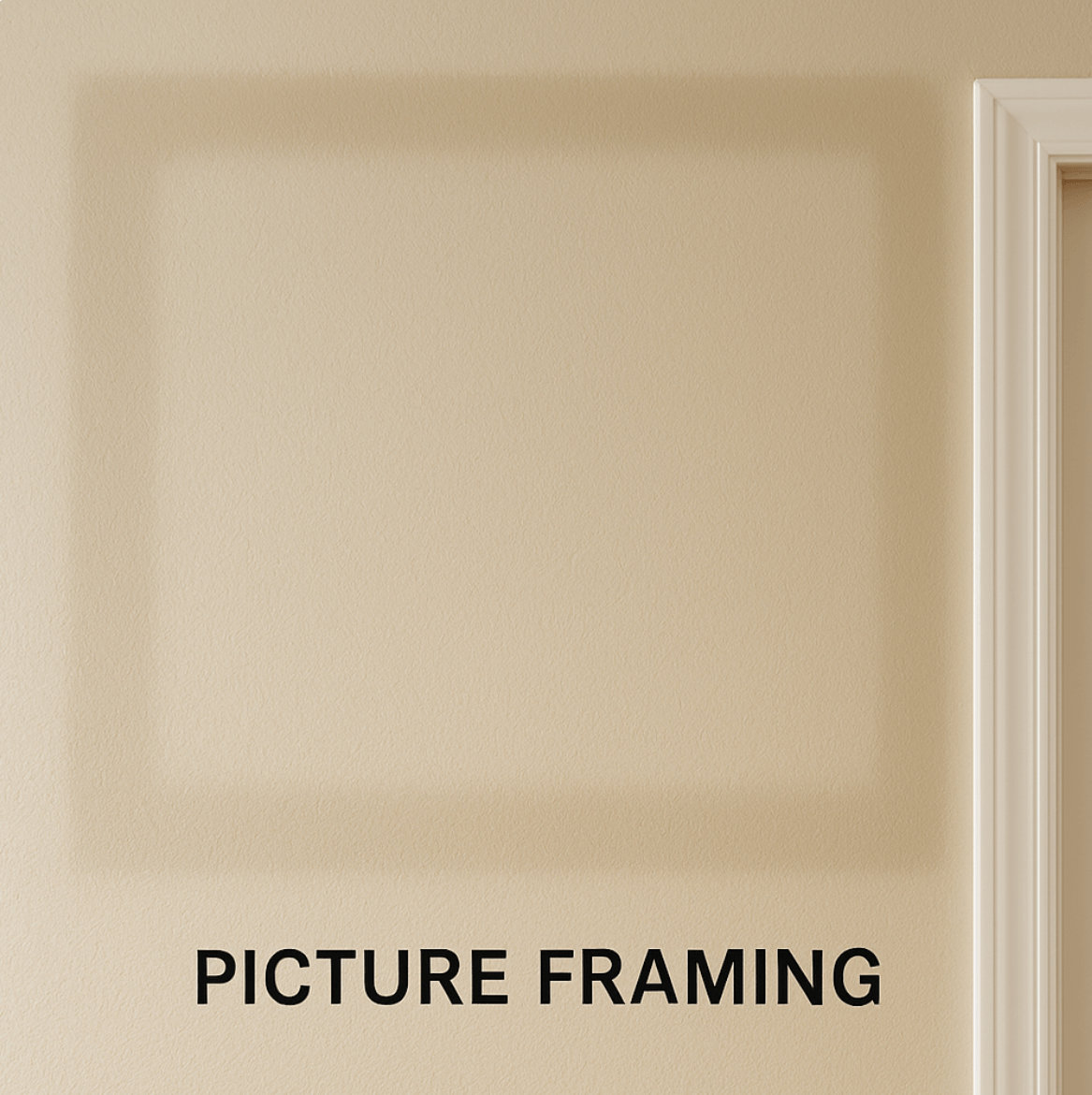Mudcracking (in paint films): A defect where a thick paint film develops deep, irregular cracks resembling dried mud. It occurs when the coating dries too quickly on the surface and becomes rigid before all underlying liquid has evaporated, often caused by heavy application, cold conditions, or paint collecting in grooves and corners.
How it Looks
- Deep, irregular cracks in the surface of the paint, resembling dried or cracked mud.
- Cracks can be wide or narrow, often branching into a network pattern.
- The paint surface appears broken or shattered, with some flakes lifting at the edges.
- More noticeable in heavily applied areas (like grooves, corners, or decorative profiles).
- Typically occurs in flat or matt finishes, especially under cold conditions.
Causes:
- Excessive film thickness – paint applied too heavily in a single coat.
- Overloading in grooves/corners – paint drains into ornate cornices, mouldings, or textured surfaces.
- Cold temperatures – slow drying allows the surface to harden before the inner layers release moisture.
- Highly pigmented paints (flats/matts) – these are more rigid and prone to cracking when applied thickly.
- Poor application technique – not spreading paint evenly, over-brushing, or not following coverage rates.
- Painting over unstable surfaces – previous cracked, chalky, or poorly prepared layers.
- Incompatible coatings – layering paints that expand or dry at different rates.
How to fix paint mudcracking
You’ll need
Paint scraper • Putty knife • Sandpaper (120–320 grit) • Tack cloth • Mild detergent & sponge • Filler/patching compound (if needed) • Primer/sealer (substrate-appropriate) • Quality topcoat (avoid heavy application) • Brushes/rollers • PPE (mask, goggles, gloves)
Step 1 — Assess the damage
- Check how deep the cracks run.
- Surface-only cracks may be sanded and repainted.
- Deep cracks to the substrate will require full removal and recoating.
Step 2 — Remove loose, cracked paint
- Scrape away all flaking and cracked paint using a scraper or putty knife.
- Feather the edges to avoid visible ridges.
Step 3 — Sand smooth
- Sand the area with 120–180 grit, then finish with 220–320 grit for a smooth surface.
- Wipe down with a tack cloth to remove all dust.
Step 4 — Clean the surface
- Wash with mild detergent and water to remove dirt, grease, and residues.
- Rinse and let the surface dry completely.
Step 5 — Repair imperfections
- If cracks have left gouges or uneven spots, apply filler/patching compound.
- Allow to dry, then sand smooth and dust off.
Step 6 — Prime
- Apply a primer/sealer suitable for the substrate (wood, plaster, masonry).
- This ensures proper adhesion and prevents future cracking.
Step 7 — Repaint correctly
- Apply two thin, even coats of quality paint.
- Avoid overloading brushes or rollers.
- Respect recommended drying and recoat times.
Step 8 — Prevention tips
- Avoid heavy application—build up finish with multiple thin coats.
- Do not paint in cold, damp, or humid conditions.
- Use quality paints, especially for flats and matt finishes.
- Ensure ornate substrates (e.g., cornices, mouldings) are coated evenly without excess build-up in grooves.
In short: Mudcracking must be scraped back, sanded, cleaned, primed, and repainted in thin coats under proper conditions to prevent recurrence.






